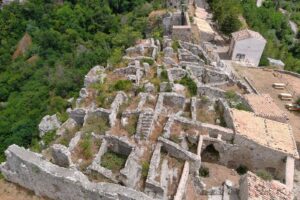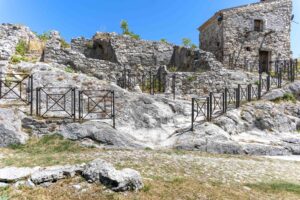On Saturday, October 11 and Sunday, October 12, the FAI Fall Days return to unveil an extraordinary heritage of 700 inaccessible or little-valued places that are usually unvisited, little known and far from the usual tourist routes, scattered throughout 350 Italian cities.
Latium and Abruzzo are certainly no exception in this long list, with exceptional places all to be discovered. From Rome to L’Aquila and Teramo with the A24 or toward Chieti and Pescara with the A25, our highways become more than ever the most convenient and safe way to reach the destinations of the fourteenth edition of the FAI Autumn Days.
In Rome and its province there is an important supply of places to visit as, moreover, in the province of Chieti with the hidden beauties of Gessopalena, Ortona, Rapino and Vasto; in the province of L’Aquila in Magliano de’ Marsi, L’Aquila and Sulmona; in the province of Pescara in Torre de’ Passeri; and in the province of Teramo in Mosciano Sant’Angelo.

THE PRETALUCENT
Not knowing how to choose, we drew lots and among the accessible places of a certain peculiarity came up Gessopalena with La Pretalucente and the ghost town in the Chalk. As reported on the FAI website, the settlement is very ancient and rocky in nature. Precisely because of the manner in which it was built, with chalk and in chalk, the Old Country or Pretalucente presents itself to the eye of the traveler as a ghost town, white in the night and bright in the sun, precisely, Pretalucente.
The remains of churches, stately mansions, humble houses, stables and oil mills are mute witnesses to the dramas that affected them, from earthquakes to war and especially to the heroic resistance of the young men of the Maiella Brigade. It is accessed from the small Piazza Garibaldi at the entrance to the present town, and, going there today means walking uphill along the narrow Via Castello, which allows visitors to admire the working of gypsum, what for the community was not only an economic, constructive and technological resource, but also the inspiration for true works of art, with egregious stucco and decorations. In a spectacular landscape, between ruined walls and panoramic views, one is immersed in the daily life of the past: among old stables and stables, bread ovens and furnaces, underground chambers, alcoves, staircases and fireplaces carved out of gypsum rock or using gypsum with special construction techniques.
In addition, as you reach the top of the cliff, you can enjoy an all-around view that sweeps from the mighty mass of the Maiella massif looming to the west, to the Adriatic Sea beyond the Aventine valley dotted with small villages to the east.
The two days dedicated to the cultural and landscape heritage of our country organized by FAI Delegations and FAI Groups in the territory count on the important participation of young volunteers. A renewed commitment to promoting awareness of Italy’s extremely rich and varied heritage of history, art and nature, a commitment that aims to reach the widest section of the citizenry.
Organizing the FAI Fall Days has become a real mission of cultural and civic education, participating is not only an opportunity to discover and enjoy the heritage that surrounds us but also a concrete way to contribute to its care and enhancement through the activities of FAI.
 In fact, at each visit, you can support FAI’s mission with a free donation.
In fact, at each visit, you can support FAI’s mission with a free donation.
WHAT TO DO TO PARTICIPATE IN THE VISITS
A list of all openings scheduled for FAI Fall Days on Saturday, October 11 and Sunday, October 12, can be found at www.giornatefai.it. To access the visits, unless otherwise specified, simply show up at the site during the opening hours indicated in the description sheet for each place.
On site, FAI volunteers will provide all the information needed for the visit and guidance on waiting times.
Visits are accessible to both FAI members and non-members because, as President Marco Magnifico says: “The FAI Days have for decades represented a kind of exemplary and fruitful alliance between virtuous citizens, those who have a sincere desire to learn about and deepen their knowledge of the history and events of this extraordinary country of ours, and their fellow citizens-in this case, the thousands of fervent FAI volunteers-who such proposals imagine and arrange so that they can be, twice each year, the content of a civilized and varied cultural offering. FAI Days is good news that happily, amid so much frightening news, is repeated. It certainly does not solve the world’s problems, but it soothes our daily pain and restores a little hope toward the possibility of civilized coexistence; with an alliance of like-minded people that sows peace “.







